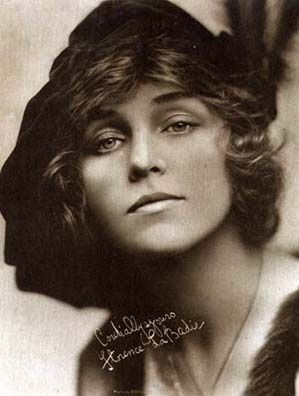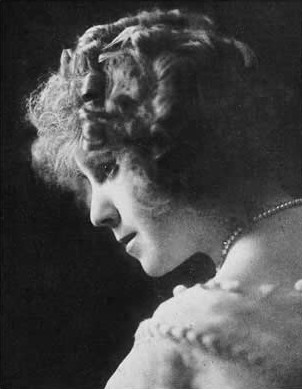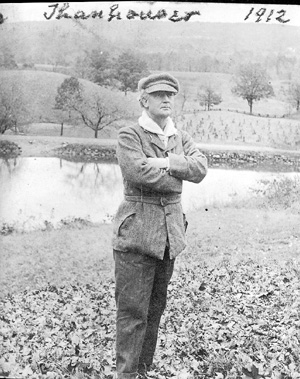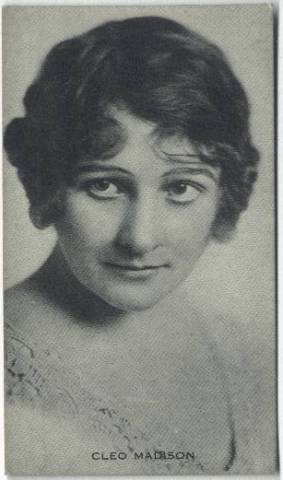
Florence La Badie was an American-Canadian actress in the early days of the silent film era. She was a major star between 1911 and 1917. Her career was at its height when she died at age 29 from injuries sustained in an automobile accident.

Olga Petrova was a British-American actress, screenwriter and playwright.

Mutual Film Corporation was an early American film conglomerate that produced some of Charlie Chaplin's greatest comedies. Founded in 1912, it was absorbed by Film Booking Offices of America, which evolved into RKO Pictures.

Anita Stewart was an American actress and film producer of the early silent film era.

Marguerite Snow was an American silent film and stage actress. In her early films she was billed as Margaret Snow.

Mignon Anderson was an American film and stage actress. Her career was at its peak in the 1910s.

Harry Benham was an American silent film actor.

Ethyle Cooke was an American silent film actress of the 1910s. In 1915, she married another prominent silent film actor of the time, Harry Benham. Cooke starred in many popular films, such as A Small Town Girl, Stronger than Death, and The Fugitive.

Lucius Junius Henderson was an American silent film director and actor of the early silent period involved in more than 70 film productions.

Gladys Hulette was an American silent film actress from Arcade, New York, United States. Her career began in the early years of silent movies and continued until the mid-1930s. She first performed on stage at the age of three and on screen when she was seven years old. Hulette was also a talented artist. Her mother was an opera star.

Cleo Madison was a theatrical and silent film actress, screenwriter, producer, and director who was active in Hollywood during the silent era.

Mary Murillo was an English actress, screenwriter, and businesswoman active during Hollywood's silent era.

Ida May Park was an American screenwriter and film director of the silent era, in the early 20th century. She wrote for more than 50 films between 1914 and 1930, and directed 14 films between 1917 and 1920. She was born and died in Los Angeles, California. She was married to film director and producer Joseph De Grasse, with whom she was regularly teamed at Universal.

Mary Anderson was an American actress, who performed in over 77 silent films between 1914 and 1923.

William J. Bowman was an American stage and film actor, writer, and director noted for his work in the early 1900s on silent productions for studios in New York, New Jersey, Chicago, and in Los Angeles during the first decade of filmmaking in and around Hollywood. His direction of a series of films with matinee idol Francis X. Bushman in 1915 and his direction of the serials The Invisible Hand in 1920 and The Avenging Arrow in 1921 form only a small part of Bowman's extensive filmography.
The Thanhouser Company was one of the first motion picture studios, founded in 1909 by Edwin Thanhouser. It operated until 1920. It produced over 1,000 films, but several dozen of the films were of small filler subjects, educational or documentaries. Many of these smaller subjects were listed as a quarter or half a reel in length and received very little critical review or analysis by film critics and the media.

Uncle Tom's Cabin is a 1910 American silent short drama produced by the Thanhouser Company. The film was adapted by from the 1852 novel Uncle Tom's Cabin by Harriet Beecher Stowe. The plot of the Thanhouser production streamlined the actual story to portray the film over the course of a single reel. The film was released on July 26, 1910, on the same day that Vitagraph released the first reel of their own three reel version of Uncle Tom's Cabin. This prompted the Thanhouser Company to advertise against the Vitagraph film by referring to the other as being overly drawn out. The film garnered mixed, but mostly positive reception in trade publications. The film is presumed lost.

Patsy De Forest was an American actress of the silent cinema era who performed on the stage since childhood before acting in films.

Fannie Bourke, also known as Fan Bourke or Fannie Burke, was an American stage and film actress, suffragist, and motion picture exhibitor. She worked on Broadway and appeared in silent films from the 1910s until the early 1930s.

The Dawson Film Find (DFF) was the accidental discovery in 1978 of 372 film titles preserved in 533 reels of silent-era nitrate films in the Klondike Gold Rush town of Dawson City, Yukon, Canada. The reels had been buried under an abandoned hockey rink in 1929 and included lost films of feature movies and newsreels. A construction excavation inadvertently uncovered the forgotten cache of discarded films, which were unintentionally preserved by the permafrost.






















